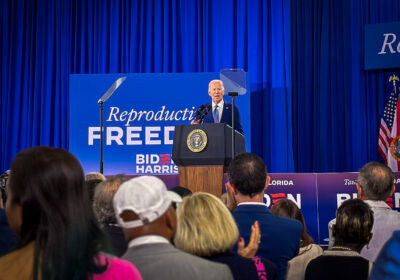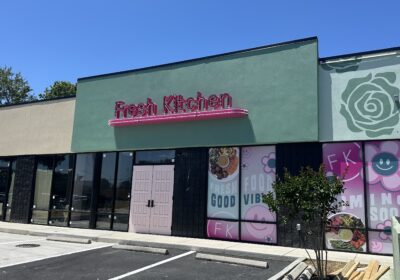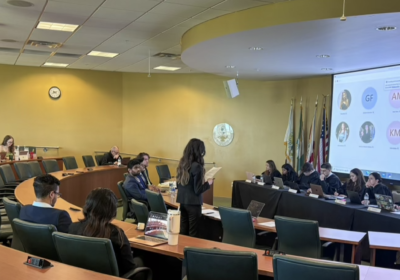Far reach for new equipment

Budget cuts and a continually declining economy have made it difficult for University Police to have all the equipment it needs to work efficiently.
Better equipment for its tactical team — a group trained to intervene during violent situations on campus — and trained drug and bomb detection dogs are just a few things on the list, said UP Chief Thomas Longo.
Item No. 1: Protective vests and helmets
Longo requested funding from Student Government in June for new tactical officer equipment — such as helmets and tactical vests to protect officers in cases of gunfire — but his request was rejected.
The proposal didn’t pass mainly because UP is not under Student Affairs — it’s under the Division of Public Safety, said Daniel Shelnutt, chairman of the Student Senate Interim Funding & Transfers Committee, which is responsible for the allocation of Activity and Service (A&S) Fees. A&S Fees come from students and go toward funding entities, projects and buildings around USF. Each student pays $8.79 per credit hour toward the fund, plus a $7 flat fee. UP, however, is funded through state-allocated money.
Jennifer Belmont, SG senator and vice-chair for the University Relations Committee in the senate, was present when the proposal was rejected. She said she was in favor of approving the funds because the equipment is for the safety of the tactical officers.
“If anything happens, God forbid, it would be benefiting the students,” she said. “It’d be almost like insurance.”
Item No. 2: K-9 Unit
Another thing UP would like to see implemented is a K-9 unit consisting of two dogs, said Longo. One dog would be trained to detect bombs and the other to detect drugs — and both would be able to track down suspects.
“K-9s create a lot of anxiety in people who want to do bad things,” he said. “People who might be thinking of targeting our students would probably think harder about it if they knew we had K-9s on our streets.”
A trained dog costs an estimated $10,000, Longo said. The officer assigned to the dog would be compensated for additional care costs, including veterinary care, food and other expenses, he said.
Bruce Benson, vice president of the Division of Public Safety, said he is a huge believer in K-9 units, but they are not a top priority on the department’s list.
“Would I lay off a police officer to establish two or three K-9 units? Certainly not,” he said. “Our personnel come first.”
Item No. 3: Extra cars
UP received additional cars last fiscal year. However, officers do not have the ability to take them home, which is something Longo said he would like to see. He said this privilege could be a good recruiting tool for UP applicants, as many of them inquire about it.
Longo said officers who are able to take their police cars home take better care of them.
“So the repair and maintenance costs are less than if officers were to trade the car between them,” he said.
Even so, Longo said, there aren’t enough cars for all officers to take home.
“We would have to get more cars first and then we would have to request that from the University,” he said.
Item No. 4: Tasers
UP wants Tasers issued to every officer. They are more effective, Longo said, than the batons and pepper spray UP has used in the past.
“Tasers are safer for the suspect and the officer. There’s a less chance of injury for the person being tased,” he said.
The use of Tasers has been discussed, Longo said, but UP has not formally requested it because money is tight. He said the total estimated cost to provide Tasers for all officers is $50,000.
Longo said the state’s projections for the next year or two look dismal.
“I don’t know what’s going to happen,” he said. “I can’t wait for the economy to change so we can get back to business.”
In all fairness, Longo said, even if UP’s budget was what he would like it to be, he probably could not afford all of the equipment at once. He said he would plan for it as a capital budget over a couple of years.
UP officer Frank Adams compiled the list of tactical officer equipment UP requested from the SG Interim Funding & Transfers Committee. He said he spoke to every major distributor and manufacturer of police emergency gear — everything from armor to special equipment. He spoke to several local SWAT teams and asked which equipment they would recommend. UP even had SWAT representatives come in and demonstrate how the equipment worked, Adams said.
UP makes the list
The proposal that was turned in to SG listed 12 items. Among them are tactical goggles and a tactical breaching kit. The goggles, at $18 apiece, would protect officers’ eyes from particles that result from nearby shootings, Longo said. The tactical backpack breaching kit is a lightweight nylon backpack with tools that enable tactical officers to knock down doors or pry them open swiftly, Longo said. He requested two at $562 apiece.
Longo also requested four K3B14 bungee slings, which hold officers’ rifles to their bodies. The slings are $50 apiece.
The most expensive piece of equipment on the list is the Level IIIA Tactical Vest. Longo said these vests have side protection and are more fitted to the individual. He added that the plates in the vest are made of plastic and weigh less than the ceramic plates inside UP’s generic-sized vests.
Sizing up the expenses
The total estimated cost of all the items on the list is $45,968.
Adams said he thinks every piece of requested equipment counts.
“It makes the officer that much more efficient and protected,” he said. “Our goal is to neutralize any threat that is presented to us.”
Benson said every aspect of policing has a cost in terms of running a police or safety organization.
“We try to prioritize each year some of the things that are most urgent for the following year,” he said. “Unless we all hit the lotto, buying everything from every list is something that no police or public safety organization can do.”
The budget cuts have affected more than UP, Benson said.
“That hurts all of us in many ways,” he said.
Benson said the division and UP will continue to look at how they can improve public safety and find extra funding sources.
“Especially grants — we need to look at grants right now,” he said.
Benson said several hundred thousand dollars was recently invested in the UP headquarters to remodel some of its bathrooms and showers. He added that the building’s air conditioning, which is being revamped, was the main cost.
“It’s not a time when extra money is going to be allocated,” Benson said. “We would like the Cadillac of everything, but in most cases, that’s not possible.”






